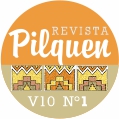ASSESSMENT AND USE OF RESOURCES IN AN EXTENDED CLASSROOM EXPERIENCE IN FIRST-YEAR MATHEMATICS AT UNIVERSITY LEVEL
Keywords:
Learning, ICT, Virtual environments, MathematicsAbstract
Information and communications technologies (ICT) have been producing great changes in society, particularly, in the access to knowledge and consequently, in the ways of learning. In order to investigate the characteristics of learning when this process is mediated by ICT, the use of resources and its assessment by the students was observed and analyzed in a fist-year math course. The experience was carried out in a course taught in an extended classroom (blended learning), where classroom teaching was complemented by the use of a virtual environment hosted in Moodle. The analysis focused on observing the students’ participation in each of the proposed activities, their use of the virtual space and their perceptions of the carried through experience and of the available resources. In this paper, the theoretical framework and the proposed research methodology, including the characteristics of the undergone experience, are introduced first. Secondly, the main results obtained in the realization are shown and discussed. Finally, some conclusions are proposed.
Downloads
References
Azevedo, R. Using hypermedia as a metacognitive tool for enhancing student learning?The role of self-regulated learning. Educational Psychologist, 40 (4), pp 199-209. 2005.
Cerezo, R., Núñez, J.C., Fernández, E., Suárez-Fernández, N. y Tuero E. “Programas de intervención para la mejora de las competencias de aprendizaje autorregulado en educación superior” en Revista Perspectiva Educacional, Vol. 50, N° 1, pp. 1-30. 2011.
Chiecher, A.; D. Donolo y M. C. Rinaudo. “Aprendizaje virtual en asignaturas presenciales. Incidencia sobre la motivación y el uso de estrategias” en Revista Virtual Udesc. Brasil. 2008.
Jacobson, M., y Archodidou, A. The design of hypermedia tools for learning: Fostering conceptual change and transfer of complex scientific knowledge. Journal of the Learning Sciences, 9(2), pp. 145- 199. 2000.
Llorente. M.C. y Cabero, J. La formación semipresencial a través de redes telemáticas (blended learning). Barcelona: DaVinci. 2008.
Moreno Moreno, M. y Azcárate Jiménez, C. Concepciones y creencias de los profesores universitarios de matemáticas acerca de la enseñanza de las ecuaciones diferenciales. Enseñanza de las ciencias, 21 (2), 265-280. 2003.
Onrubia, J. Aprender en entornos virtuales de enseñanza y aprendizaje: actividad conjunta, ayuda pedagógica y construcción del conocimiento. Revista de Educación a Distancia. Monográfico II. 2005.
Ortega Carrillo, J.A. Los medios didácticos y su tenología. En “Didáctica General. La práctica de la enseñanza en la Educación Infantil, Primaria y Secundaria” de Agustín de la Herrán Gascón y Paredes Labra, J. (coord). Madrid: McGraw-Hill. 2008.
Shea, P., Pickett, A. and Li, C.S. Increasing access to Higher Education: A study of the diffusion of online teaching among 913 college faculty. International Review of Research in Open and Distance Learning, 6 (2). 2005.
Zimmerman, B. J. y Tsikalas, K. E. Can Computer-Based Learning Environments (CBLEs) Be Used as Self-Regulatory Tools to Enhance Learning? Educational Psychologist, 40(4), pp. 267–271. 2005.
Downloads
Published
How to Cite
Issue
Section
License
Revista Pilquen, Sección Psicopedagogía sostiene su compromiso con las políticas de Acceso Abierto a la información científica, al considerar que tanto las publicaciones científicas como las investigaciones financiadas con fondos públicos deben circular en Internet en forma libre, gratuita y sin restricciones.
Los trabajos presentados en Revista Pilquen, Sección Psicopedagogía deben ser originales e inéditos y no estar postulados simultáneamente en otras revistas. El envío de todo tipo de colaboración implica la aceptación de las normas editoriales de la revista y la autorización al Comité Editorial para que difunda los trabajos tanto en la revista como en las bases de datos o sistemas de indización en donde se alojan los contenidos de Pilquen.
Los autores que publican en esta revista están de acuerdo con los siguientes términos:
1) Los autores conservan los derechos de autor y garantizan a la revista el derecho de ser la primera publicación del trabajo al igual que licenciado bajo una Creative Commons "Atribución -No Comercial CC BY-NC-SA”, mediante la cual ser permite copiar, reproducir, distribuir, comunicar públicamente la obra y generar obras derivadas, siempre y cuando se cite y reconozca al autor original. No se permite, sin embargo, utilizar la obra ni sus posibles obras derivadas con fines comerciales.
2) Los autores pueden establecer por separado acuerdos adicionales para la distribución no exclusiva de la versión de la obra publicada en la revista (por ejemplo, situarlo en un repositorio institucional o publicarlo en un libro), con un reconocimiento de su publicación inicial en esta revista.
3) El o los autores no recibirán compensación monetaria de Pilquen por el uso del material contenido en el artículo; así como tampoco asumirán ningún costo de publicación de los mismos.













